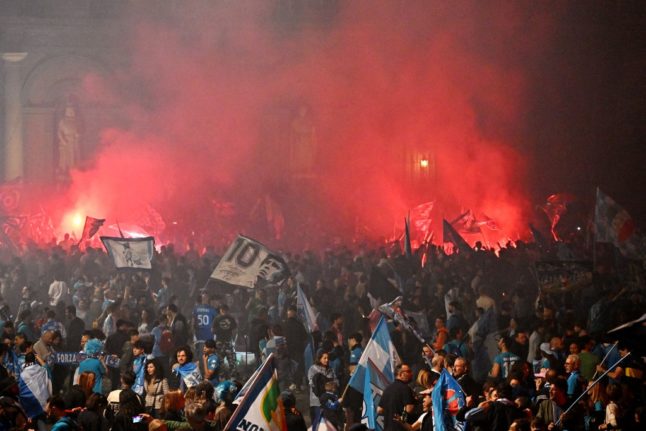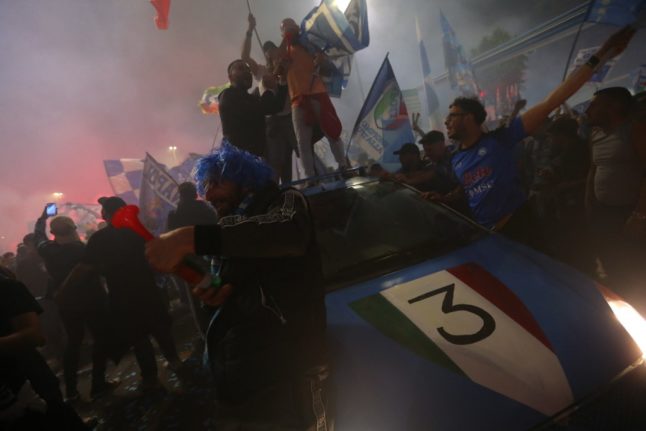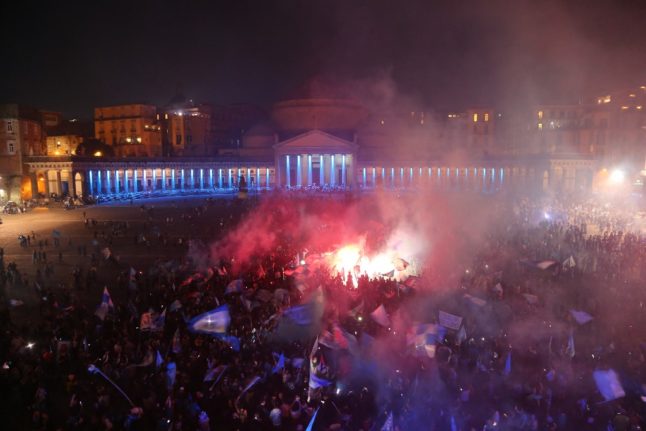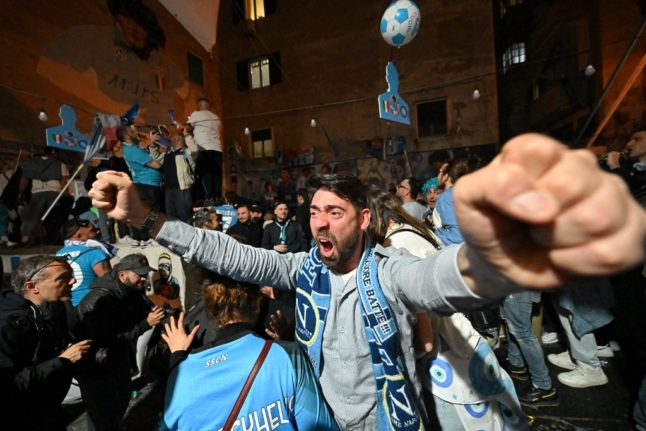As the whistle blew on Napoli’s 1-1 draw at Udinese late Thursday, the southern Italian city erupted into a collective roar of joy at its team securing their first Serie A title since the days of Diego Maradona.
“It’s unbelievable! It’s been so long!” said Facundo Quense, 33, as fans celebrated with tears, shouts, laughter and hugs amid a sea of smoke from red flares.

The team was playing on the other side of the country, but fans gathered across Naples to follow the match on big screens in squares and in front of churches.
“We will win the title!” they chanted over and over as horns blew across streets and balconies that have been adorned in blue bunting, blue flags and blue banners for weeks.
When the moment of victory finally came, the night air was filled with cheers, chants and fireworks, the incessant honking from mopeds and cars adding to the joyful tumult.

“We feel a weight has been lifted because it has been so many years of effort – and we are finally rewarded,” said Fabrizio D’Anielo, 35, his face covered in blue powder.
Some 55,000 fans watched the match on the big screen in the Stadio Maradona, the stadium named after the Argentine striker that many here consider nearly divine.
It was under the leadership of Maradona, who died in 2020, that Napoli won its first Scudetto in 1987 and its second in 1990.
‘Maradona is with us’
Napoli fans have dreamed for months about wresting the Scudetto from the big clubs in Italy’s rich north and bringing it home to a city battered and beset with problems but passionately devoted to its team.
“For years we’ve felt pushed into the background behind the teams in the north,” said Alessandro De Luca, a 19-year-old student wearing a Napoli scarf on his shoulders.
“I did not live through the 33 years of scarcity but I shed tears for this team.”

Victory became mathematically possible last Sunday, when thousands of blue-clad fans, many with blue hair, blue crowns or Maradona wigs, descended on the city centre.
But it was not until Thursday night that Luciano Spalletti’s side finally did what it took to seal the Scudetto with a month of the season remaining.
“Football is in our DNA, we are Italians, but above all Neapolitans,”

Antonio Esposito, 65, said earlier as he walked his dog – dressed in blue – by the giant fresco of Maradona in the Spanish Quarter.
“This victory is even better than the first, we feel that Maradona is with us and protects us.”
Stalls selling Napoli merchandise filled the streets of the historic centre, whose entrance was marked to a banner reading “Welcome to Naples, Italian champions 2022/2023”.
A local DIY stall installed in front of its window a series of funeral plaques for Napoli’s rivals, complete with flowers and candles, as in a cemetery.
“Here lies AC Milan, for the joy of Neapolitans,” one plaque read.

Enzo de Rosa, a Neopolitan of Spanish origin, said Napoli’s victory represented “a social redemption in relation to other cities” in the north who many here feel look down on Naples.
“For us, this is a huge satisfaction. This city shines in so many ways – in art, culture, as well as football,” he said.
The party was expected to run into the weekend, when Napoli will play Fiorentina at home on Sunday, and likely beyond.



 Please whitelist us to continue reading.
Please whitelist us to continue reading.
Member comments